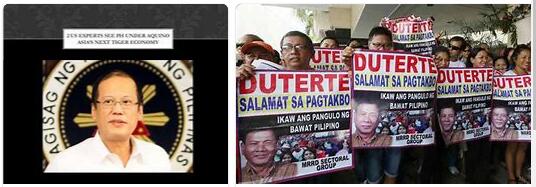The crisis of the authoritarian regime of FE Marcos (1986) and the launch of a new democratic constitution implemented by C. Aquino (head of state and executive from 1986 to 1992) did not coincide with a general and profound renewal of political customs and government practices. In fact, political life continued to be characterized by widespread corruption and by the conflicts of the dominant oligarchies, an expression of agrarian and financial interests, while the continuation of the austerity policies and the limits of the agrarian reform launched in 1988 continued to fuel strong social tensions. The restlessness of the armed forces (authors of seven coup attempts from 1986 to 1990) and the resumption of the communist and Muslim guerrillas constituted further reasons for instability and contributed to weakening the Aquino government, already undermined by the crisis of the coalition that had supported its election.
General elections took place in May 1992, which confirmed the fragmented nature of the political framework and brought the former Defense Minister, Philippines Ramos, to the presidency, supported by Aquino who had decided not to run again. The new president formed a coalition executive and placed the revitalization of the economy and national reconciliation with the guerrillas and the coup military at the center of his program. With the ban on the Communist Party removed and an amnesty granted (September 1992), the government entered into new, difficult negotiations with the Communist guerrillas of the New People Army (NPA) and with the Muslim independence movement (the Moro National Liberation Front, MNLF). of peace; in August 1993an action was also launched to disarm the numerous paramilitary formations, financed by local notables and landowners, engaged in illegal activities.
From an economic point of view, the Ramos administration continued in the liberalization process initiated by Aquino, launched numerous incentives to encourage investments from abroad and opened the banking system to foreign credit institutions. This favored a revival of the economy and a growth in gross domestic product which fluctuated, between 1994 and 1997, between 5 and 7 %. The elections for the House of Representatives in May 1995 rewarded the parties of the government coalition, which nevertheless went into crisis in 1996 due to the withdrawal of the main formation, the centrist Laban ng Demokratikong Pilipino (LDP, Philippine Democratic People’s Struggle), contrary to the severe anti-terrorist legislation introduced in 1996 by Ramos, as well as to his plans for tax reform and restructuring of the state bureaucracy.
In September 1996, an agreement was signed between the government and the MNLF, which ended 24 years of guerrilla warfare in the southern provinces. It provided for: the establishment of a Southern Finance Council for Peace and Development, which was entrusted with the administration of 14 provinces and 10 cities in the Muslim region of Mindanao; the holding of a referendum on the autonomy of the southern regions; the integration of part of the rebel troops into the Philippine army. At the same time, negotiations were started with the most intransigent wing of the Islamic movement, the Moro Islamic Liberation Front (MILF) – established in 1978from a split in the MNLF – which, contrary to the agreement, had continued the fighting. The talks, which culminated in the truce of July 1997 and the agreement of the following March, were interrupted in December 1998, when the clashes between the MILF and the army resumed, which continued throughout 1999.
On the international level, the government continued intense diplomatic activity in those years, aimed at promoting closer economic collaboration at the regional level, as well as improving relations with the United States and Taiwan. With China, on the other hand, relations remained difficult above all due to the failure to resolve the dispute relating to the Spratley Islands, whose sovereignty was claimed not only by Manila and Beijing, but also by other nations (Taiwan, Vietnam, Brunei and Malaysia).
General elections were held in May 1998. The candidate supported by the outgoing president (which the Constitution prohibited from re-running), by the Church and by a part of the business world, J. de Venecia, was beaten by the vice president J. Estrada, who led an electoral campaign with a strongly populist tone and obtained also the support of Marcos’ widow, Imelda. Estrada’s party, the Laban ng Makabayang Masang Pilipino (Struggle of the Philippine National Masses), thus also won the majority of seats (110) in the House of Representatives, while the centrist coalition, formed by three parties, obtained only 50.
